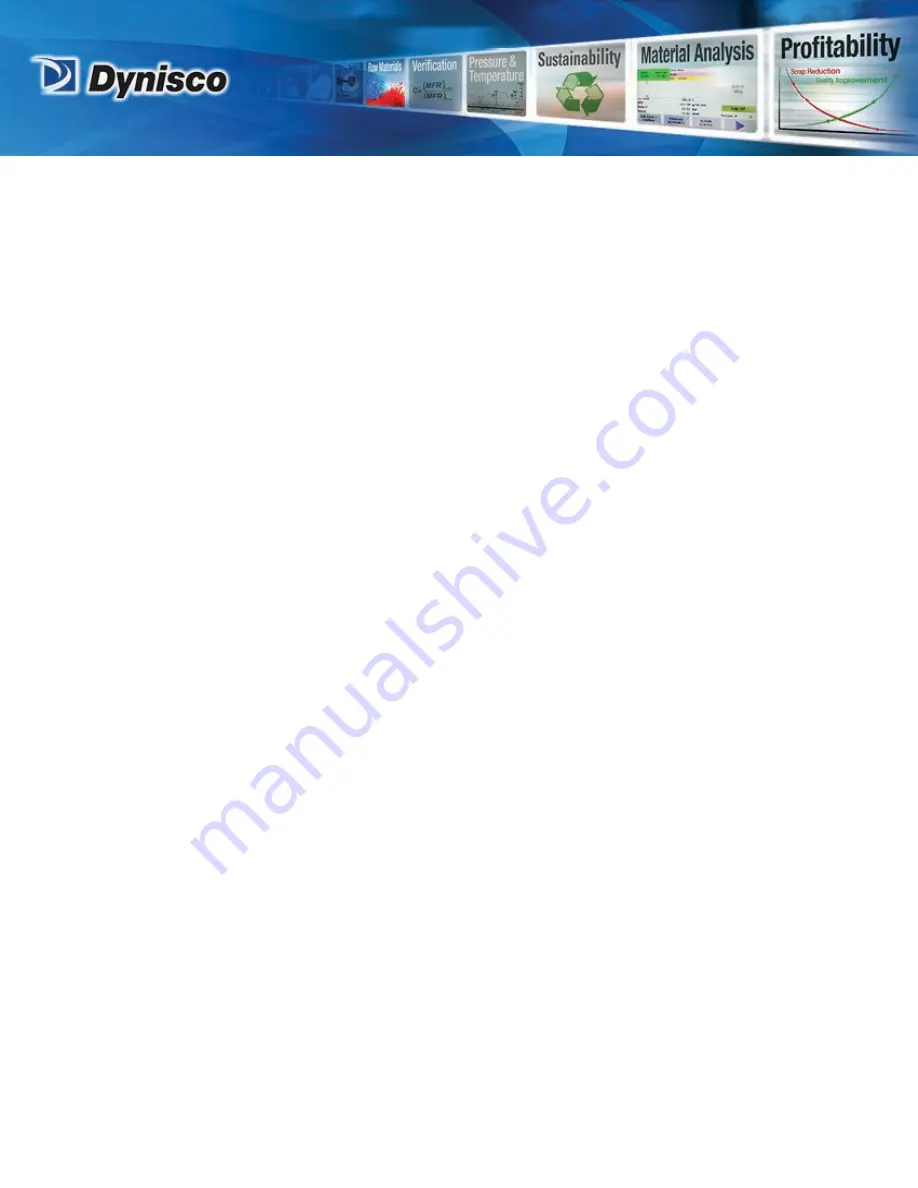
LCR7000 & RHEOSIGHTS P/N: 974194 |
Rev: A
|
ECO: 52468
www.dynisco.com
From lab to production,
providing a window into the process
-19-
use gloves you will get burned. Using a 100% cotton rag wipe the top of the die clean. Be
sure to get the material out of the conical top section, if your die has a 120’ or 180’ tapered
entrance. Run the supplied drill bit into the die. Remove material that collects in the drill
grooves and repeat until the drill passes easily through the die. On long dies it may be
necessary to clean from both ends to completely clean the entire length of the die. While
the die is out, look down the barrel bore to be sure it is clean. If it is not run a couple of
patches up and down it before putting the die back into position. When the die is out of the
barrel it cools down quickly. The longer it is out the longer will be the wait for the
temperature to stabilize. Minimizing the time the die stays out of the rheometer will help
to increase the number of tests you can run. When the temperature on the front display is
stable, you will hear a “beep” and the display will read “READY”. You can now begin your
next test. Loading material will cause a small temperature change even after temperature
set point is achieved. The melt time should provide ample time to get the temperature to
set point before the first data point is collected.
Always leave the rheometer clean. If the rheometer is going to be idle at room
temperature, for an extended period, you may wish to coat the barrel with a light
rheometer oil to prevent rusting. The oil will need to be purged from the rheometer before
accurate data can be obtained.
For reference, the difference between a die and an orifice is that an orifice is a very short
length die.
















































